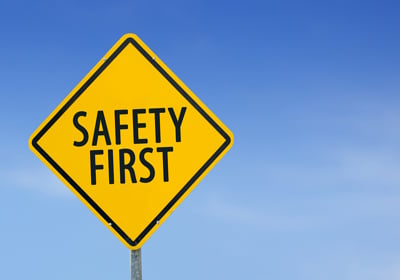The three-legged stool is often used as an analogy for three essential elements needed to operate a successful organisation. These three elements are described by Ernesto Sirolli as the Trinity of Management TM as ‘Product/Services’; ‘Marketing’ and ‘Financial Management’. This analogy is also appropriate for health and safety at work. The simple concept is that you need all three legs to maintain balance on the stool and similarly with health and safety, I believe you need three core strategies to ensure a safe and healthy workplace.
The three core strategies for a safe environment are culture, capability and compliance, or the 3 C’s.
All three strategic initiatives have an important role and you cannot succeed without one of the legs – you will struggle to achieve a healthy and safe work environment.
A significant aspect in New Zealand’s current health and safety work environment is the lack of a strategic approach to safety. Many companies focus on the tactical aspects with long ‘to do’ lists, generally following an audit or review of their company, instead of taking a more strategic or high level view of:
(1) what they want to achieve (generally their health and safety vision or objective)
(2) what are the important goals
(3) what are their strategies (how they going to achieve these goals)
(4) how success will be measured (KPI’s)
(5) what are the realistic targets.
It is vital this strategic approach also sits alongside other business strategies, if not actually incorporated.
Using the three-legged stool analogy, we can use the 3 C’s as our strategies to achieve our goals.
Our culture strategy is focused on developing a strong health and safety culture within the organisation and this is achieved firstly through demonstrated leadership in health and safety from the Board, CEO and senior management team. Only with leadership at this level will a company achieve a strong safety culture, encourage engagement across the business, provide the environment where everyone feels responsible for their safety and the safety of others, and talk openly about the safety challenges on the job.
To achieve this level of culture though you need to build capability in people at all levels so they are able to carry out their roles safely and productively.
Building capability starts with
training and it’s important. However, it is more than just a training session on something like how to operate a piece of equipment, it’s about building the ability, skills and aptitude in people so they respond in the correct way when the situation changes from the norm. This often comes from experience, but even experienced operators can become careless, distracted or complacent. Therefore, having the right culture that recognises and adapts to these situations is critical.
Compliance is often viewed as the ultimate goal by organisations - I often hear that ‘if we comply with the legislation then we must be OK’. Unfortunately, ‘just complying with the law’ in today’s world is not enough.
There are aspects of compliance that we need to achieve and leverage, and certainly there are some great
online tools to help you with this. In this strategy, it’s about having processes to support the other two legs of the stool, our culture and capability strategies.
Compliance is sometimes viewed as a ‘necessary evil’, but it provides a way of measuring ourselves against the legislation and complying with Standards, Codes of Practice etc. and putting in place risk management initiatives to ensure people are safe.
It’s a priority for every organisation to identify and control their top critical risks. The best way to achieve this is through engaging the workers who are involved in the activities associated with these risks.
With greater emphasis today on collecting and retaining health and safety information in your organisation, it is essential to ensure the system you use is appropriate to your level of health and safety risks, sized for your organisation, easy to use and adopted at all levels of the organisation, including leaders in the business. This is where the bracing between the stool’s three legs comes in, and helps us manage the documentation, forms, and data necessary to manage the overall health and safety system.
The bracing between the legs of our stool are important. They connect our three strategic initiatives – the 3 Cs – and ensure alignment with the organisation’s health and safety vision. It also ensures the stool is safe to sit on and that is equally important too!
John O’Rourke is a Health and Safety Consultant with MinterEllisonRuddWatts who has experience working with multinationals in New Zealand, Australia and the United Kingdom.

